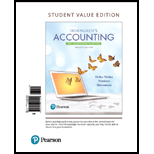
Cash Ratio: It is useful to evaluate the cash available as cash is an important factor for day to day operations for any business. It comes under liquidity ratios and cash is divided by current liabilities compute this ratio.
Times-interest-earned Ratio: It reflects company’s earnings as the times of its interest expenses. It is used to evaluate the ability to pay interest expense, a company has. Higher ratio is preferred as it enables to pay the obligation of interest.
Inventory Turnover: It is a part of efficiency ratios used during the process of ratio analysis. It reflects the number of times a company’s inventory is converted into sale during a particular period. The cost of goods sold is divided by average inventory to get the value of inventory turnover.
Gross Profit Percentage: This ratio evaluates the profitability of each dollar of sale. Gross profit is first step toward the profitability so companies are very keen to have a higher gross profit percentage. It enables them to cover the operating expenses related to business.
Debt to Equity Ratio: This ratio reflects the relationship of company’s total liabilities to total equity. It is used to represent financial leverage in the business. Higher ratio means that the company has used debts more than the owner’s capital to acquire the assets.
Earnings per Share of Common Stock: It is a mandatory term to be reported with the financials of a company in the annual report. It reflects the amount earned or lost on each outstanding common equity share. It is widely used to evaluate the performance of a business.
Price/Earnings Ratio: It depicts the relation of market price of a share to earnings per share of that company. The price/earnings ratio presents the market value of the amount invested to earn $1 by a company. It is major tool to be used by investors before the decisions related to investments in a company.
1.
a.
To Compute: The current ratio of G Company for 2017 and 2018.
b.
To Compute: The cash ratio of G Company for 2017 and 2018.
c.
To Compute: The times-interest-earned ratio of G Company for 2017 and 2018.
d.
To Compute: The inventory turnover of G Company for 2017 and 2018.
e.
To Compute: Gross profit percentage of G Company for 2017 and 2018.
f.
To Compute: The debt to equity ratio of company G for 2017 and 2018.
g.
To Compute: The rate of return on common stockholders’ equity of company G for 2017 and 2018.
h.
To Compute: The earnings per share of common stock of company G for 2017 and 2018.
i.
To Compute: The price/earnings ratio of company G for 2017 and 2018.
2.
a.
To Analyze: The change in company G’ ability to pay debts and to sell inventory during 2018.
b.
To Analyze: The change in investment attractiveness of company G’s common stock during 2018.
Want to see the full answer?
Check out a sample textbook solution
Chapter 17 Solutions
Horngren's Accounting: The Managerial Chapters, Student Value Edition (12th Edition)
- Please help!arrow_forwardFILL ALL CELLS. NOTICE THE DROPDOWN OPTIONSarrow_forwardABF's metal spare parts manufacturing company uses the customised production method by attributing the GST to the products it produces with the help of predetermined attribution coefficients. The processing of metal parts is carried out in two production departments: the Cutting and Drilling department, and the Assembly department. The GIS attribution coefficients for the two departments are based on the operating hours of machines and the cost of direct work respectively. At the beginning of the year, the following budgets were implemented: Cutting and Drilling Department Assembly Department Direct Labor Costs (in euros) 1.320.000 2.000.000 G.B.E. (in euros) 4.800.000 2.400.000 Machinery Operating Hours 80.000 5.000 Direct Work Hours 27.000 12.000 Requested: To calculate the coefficient of attribution of the General Secretariat that will be used in each department. (4 units) To determine the production cost per unit for order 158 which…arrow_forward
- PLEASE HELP. I HAVE PROVIDED THE DROPDOWN OPTIONSarrow_forwardThe difference between the balance in a company's cash account and its bank statement is documented in the __________ of the bank statement.arrow_forwardLarge corporations should report revenues on their income statements when the __________. Cash Is Received Revenues Are Earnedarrow_forward
- PLEASE HELP WITH THIS PROBLEMarrow_forwardThe KLM Medical Clinic has two auxiliary departments: the Building Maintenance Department and the Energy Production Department as well as three main production departments: the Department of Paediatrics, the Department of Internal Medicine and the Department of Surgery. The CLM allocates the cost of the building maintenance department based on the area occupied by the departments in square meters and the cost of the energy department based on the days of hospitalization of patients. No distinction is made between variable and fixed cost elements. The budgeted operating figures for the previous year were as follows: Auxiliary sections Main production departments Building maintenance Energy production Pediatrics Department of Internal Medicine Surgical Estimated cost before allocation 18.000,00 8.000,00 80.000,00 50.000,00 90.000,00 Area (in sq.m) 1.000,00 4.000,00 6.000,00 18.000,00 12.000,00 Patient Hospitalization…arrow_forwardwhat is financial accounting? explain its parts and all things.arrow_forward

 AccountingAccountingISBN:9781337272094Author:WARREN, Carl S., Reeve, James M., Duchac, Jonathan E.Publisher:Cengage Learning,
AccountingAccountingISBN:9781337272094Author:WARREN, Carl S., Reeve, James M., Duchac, Jonathan E.Publisher:Cengage Learning, Accounting Information SystemsAccountingISBN:9781337619202Author:Hall, James A.Publisher:Cengage Learning,
Accounting Information SystemsAccountingISBN:9781337619202Author:Hall, James A.Publisher:Cengage Learning, Horngren's Cost Accounting: A Managerial Emphasis...AccountingISBN:9780134475585Author:Srikant M. Datar, Madhav V. RajanPublisher:PEARSON
Horngren's Cost Accounting: A Managerial Emphasis...AccountingISBN:9780134475585Author:Srikant M. Datar, Madhav V. RajanPublisher:PEARSON Intermediate AccountingAccountingISBN:9781259722660Author:J. David Spiceland, Mark W. Nelson, Wayne M ThomasPublisher:McGraw-Hill Education
Intermediate AccountingAccountingISBN:9781259722660Author:J. David Spiceland, Mark W. Nelson, Wayne M ThomasPublisher:McGraw-Hill Education Financial and Managerial AccountingAccountingISBN:9781259726705Author:John J Wild, Ken W. Shaw, Barbara Chiappetta Fundamental Accounting PrinciplesPublisher:McGraw-Hill Education
Financial and Managerial AccountingAccountingISBN:9781259726705Author:John J Wild, Ken W. Shaw, Barbara Chiappetta Fundamental Accounting PrinciplesPublisher:McGraw-Hill Education





